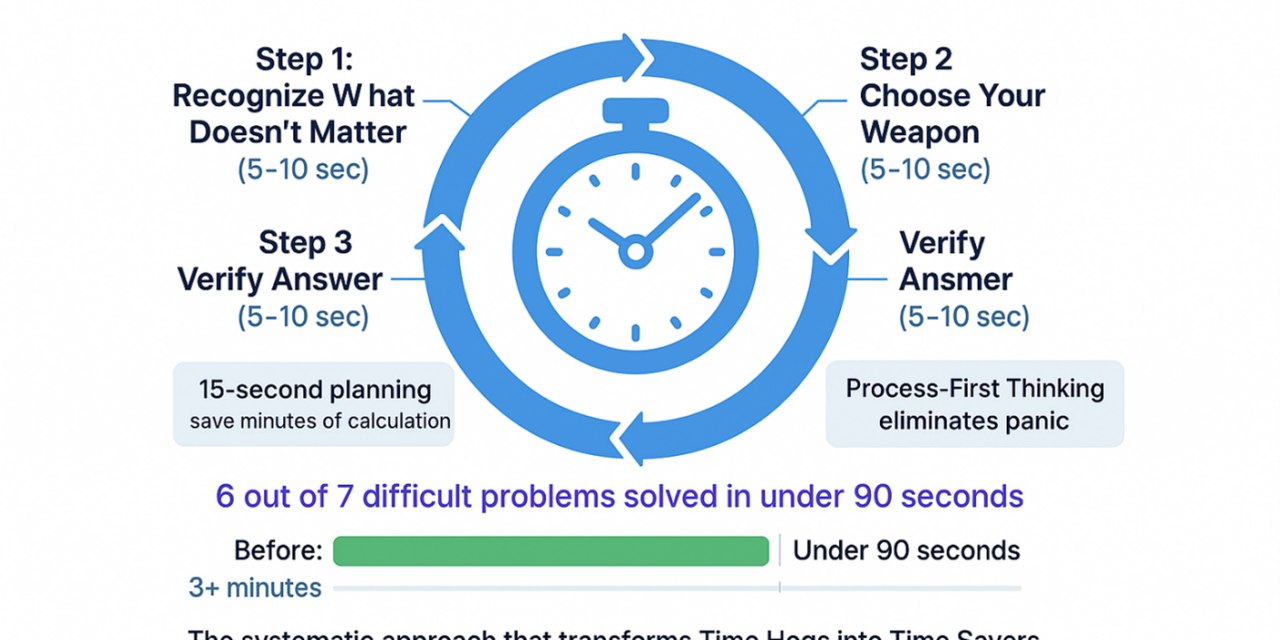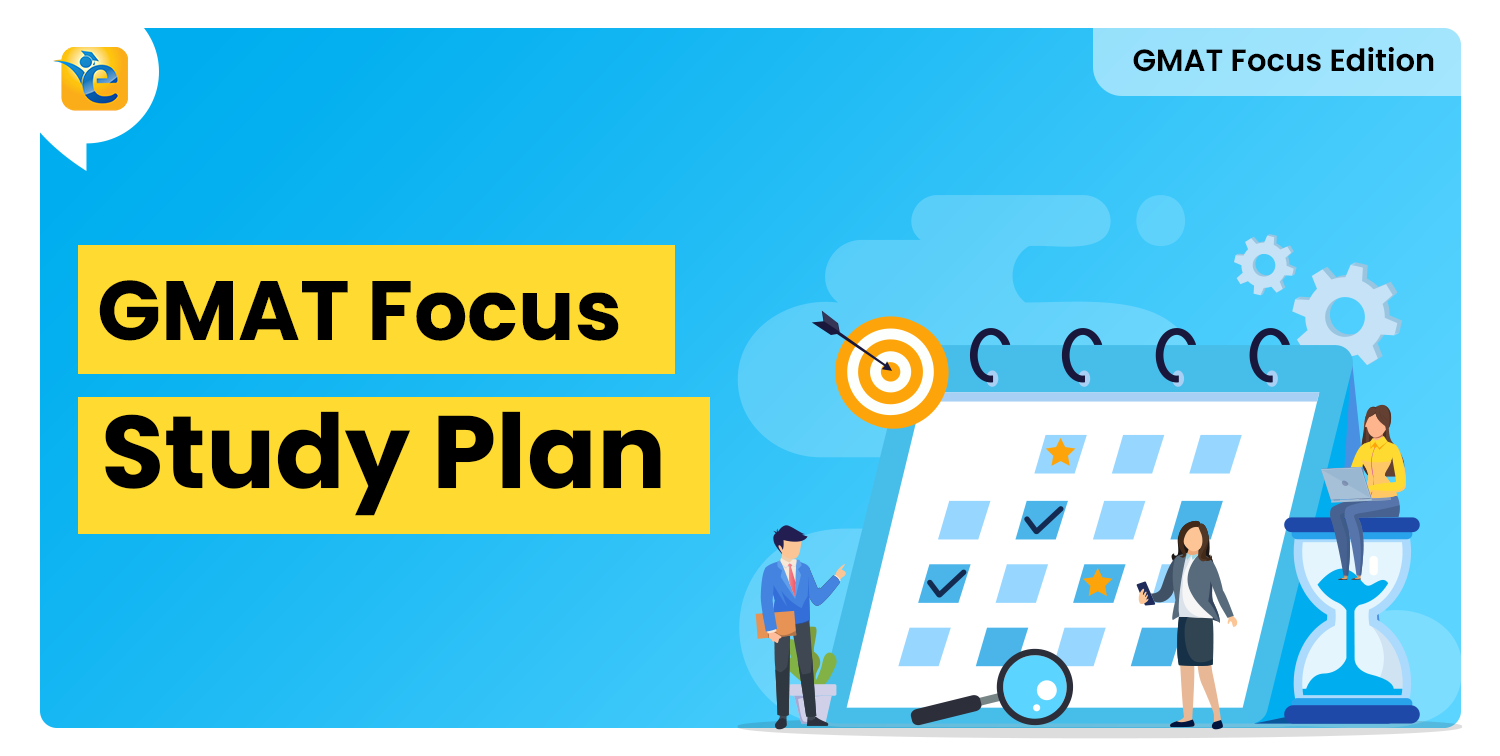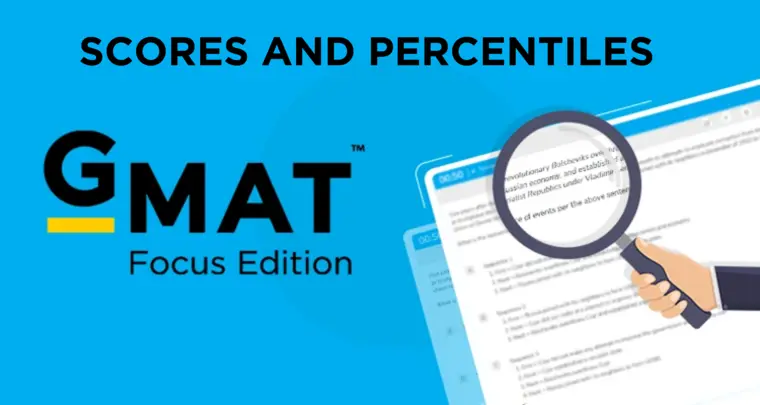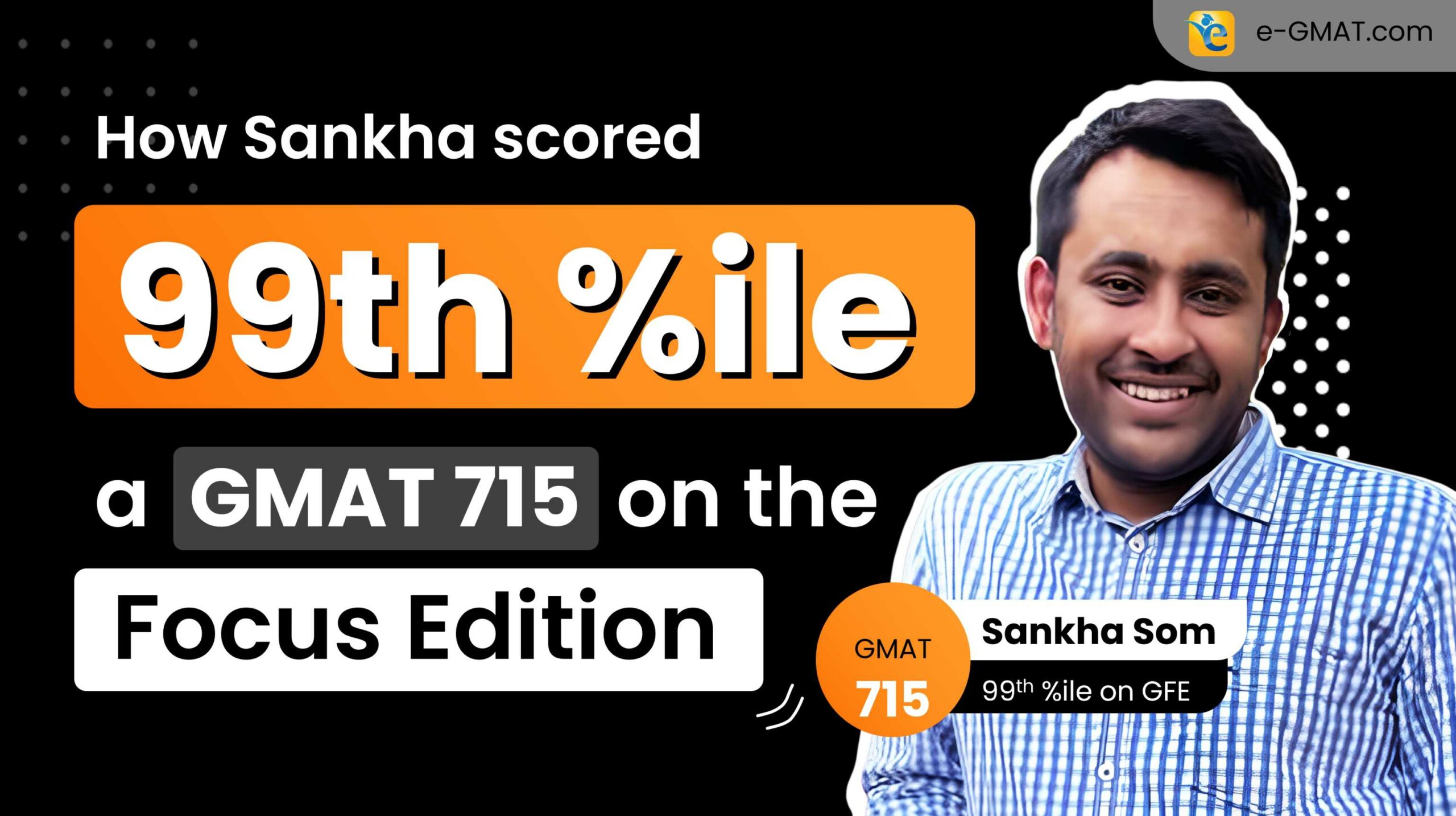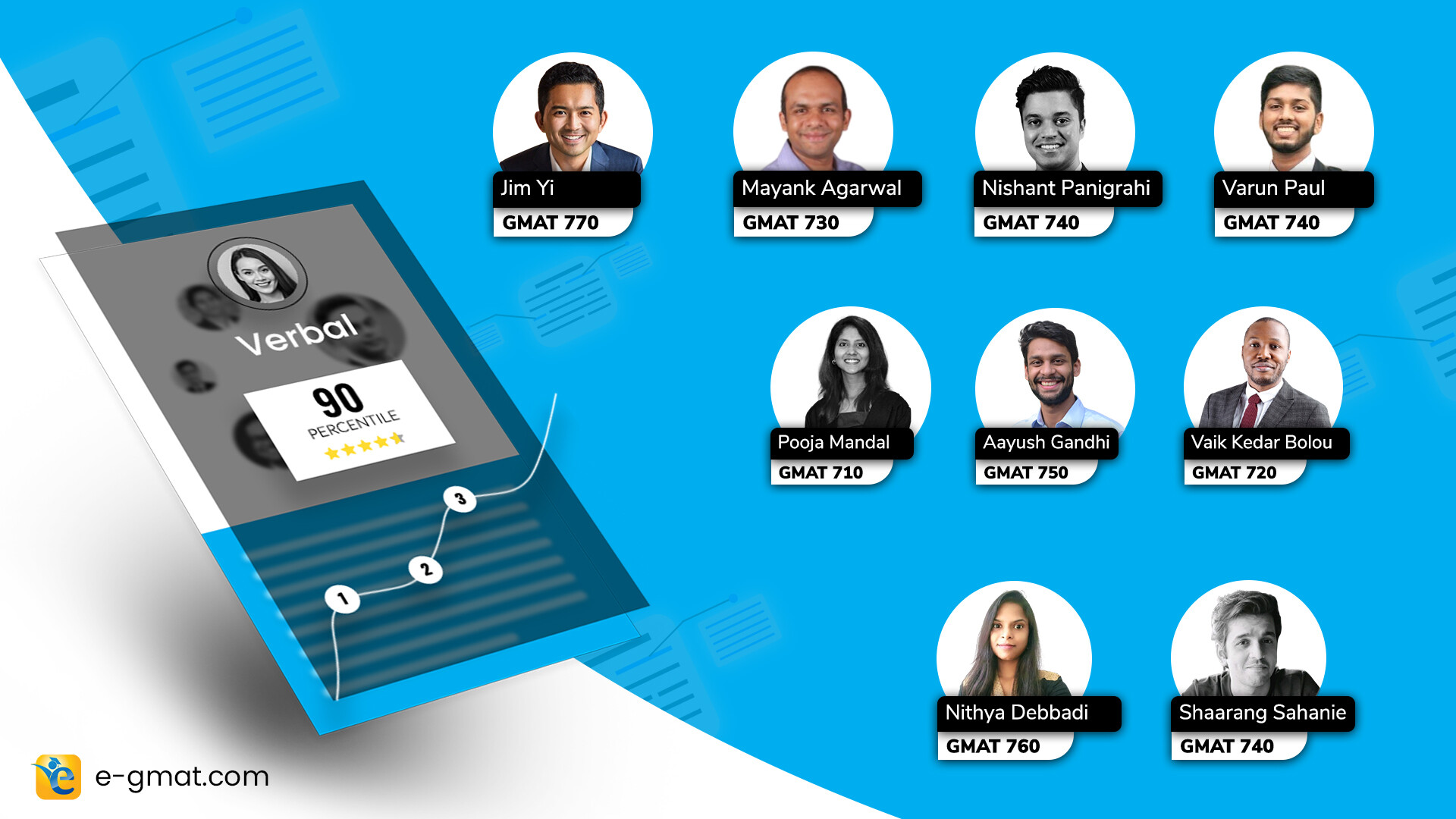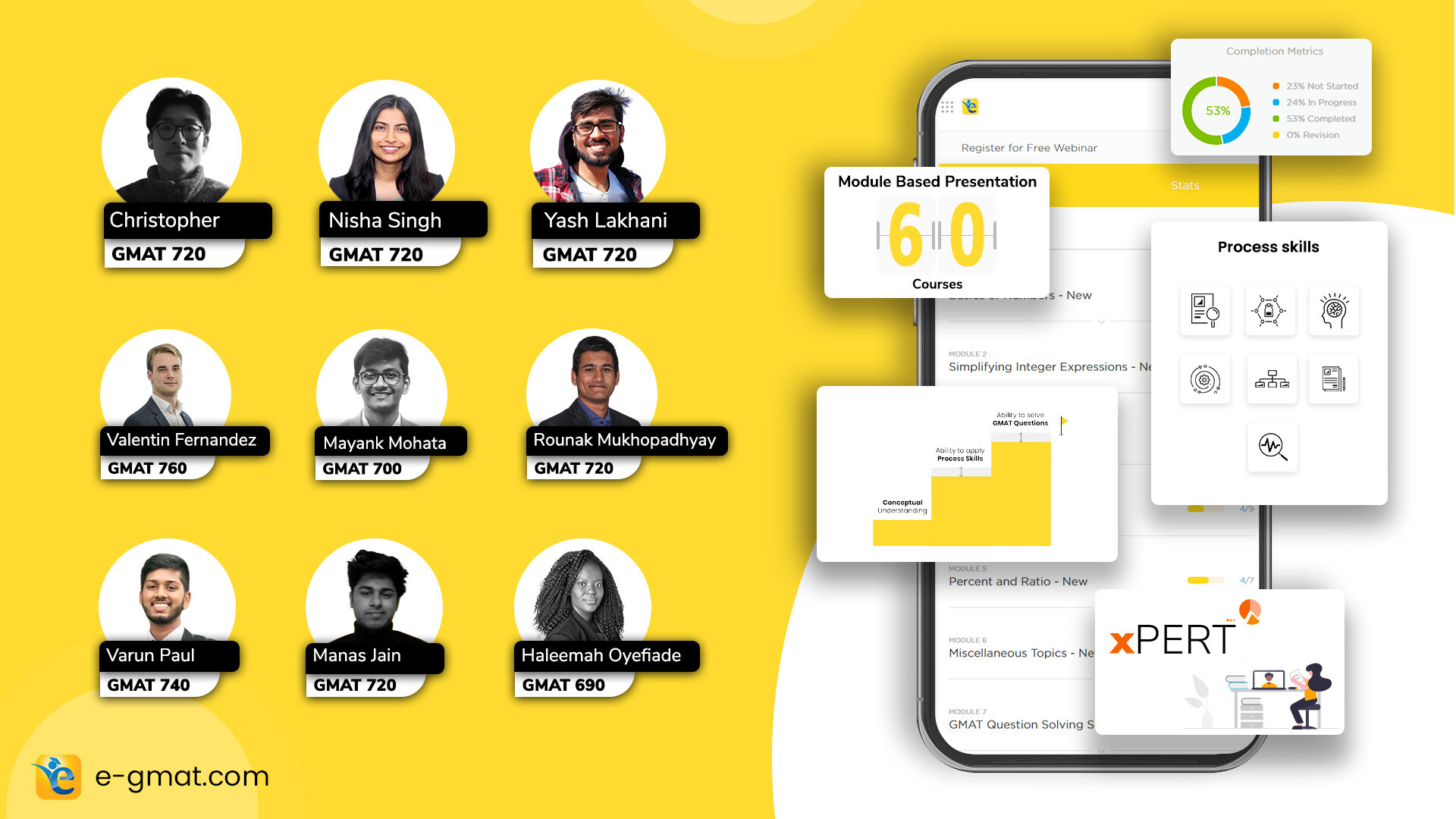Here’s a startling fact: 6 out of 7 difficult GMAT arithmetic questions are actually Time Savers in disguise. You read that correctly. Those intimidating problems that seem to demand 3+ minutes of calculation? Most can be solved in under 90 seconds once you know the right approach.
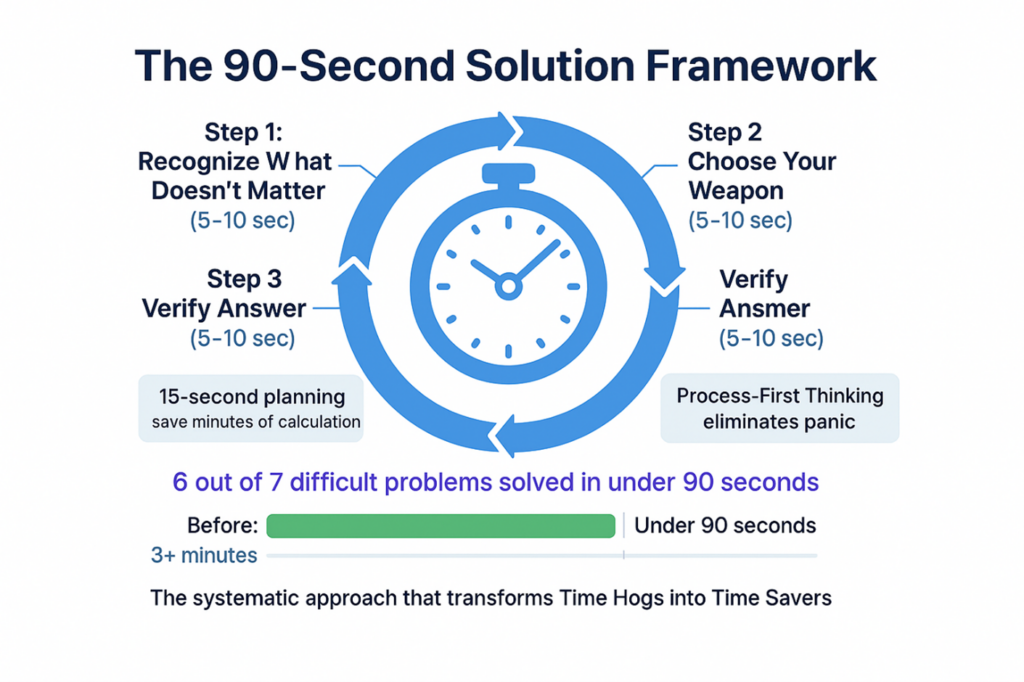
Today, I’m going to transform how you see “difficult” GMAT arithmetic. By the end of this article, you’ll possess three powerful techniques that turn complex-looking problems into quick victories. More importantly, you’ll understand why spending 15 seconds planning your approach saves you minutes of unnecessary calculation.
Key Takeaways from This Quick Wins Guide:
Discover the three powerful techniques that transform complex GMAT arithmetic into quick victories:
- The Power of Simplification: Strip away superficial complexity to reveal simple structures
- Drawing Inferences: Identify what really matters and ignore the rest
- Formula Mastery: Know when direct application beats elaborate calculation
Learn why a 15-second planning pause can save you minutes of unnecessary calculation and transform Time Hogs into Time Savers.
⭐MASTER RAPID PROBLEM-SOLVING
Transform your GMAT Quant performance with our comprehensive rapid-solving techniques. Access free practice questions, adaptive mock tests, and strategic frameworks that turn complex problems into quick victories.
The Power of Simplification—When Less is Exponentially More
Let me show you a problem that stumps most test-takers:
Official GMAT Question
Consider a list of numbers represented as fractional powers:
-(1/2)^(-6/4), -(1/4)^(-2/3), -(3/6)^(-1/2), -(1/3)^(-3/2), -(1/2)^(-4/2)
What is the median of this list?
A. -(1/2)^(-6/4)
B. -(1/4)^(-2/3)
C. -(3/6)^(-1/2)
D. -(1/3)^(-3/2)
E. -(1/2)^(-4/2)
Your first instinct might be to start calculating each expression. Stop. That’s exactly what transforms this Time Saver into a Time Hog.
The 90-Second Solution Path
Step 1: Recognize What Doesn’t Matter (5 seconds)
All expressions have negative signs outside. Since we’re finding the median—the middle value when ordered—these negative signs don’t affect the ordering. Remove them mentally.
Step 2: Apply the Reciprocal Rule (10 seconds)
Negative exponents mean reciprocals. Let me demonstrate with a simpler example: 2^(-2) becomes 1/4. Similarly, (1/2)^(-6/4) becomes 2^(6/4) or 2^(3/2).
Step 3: Convert Everything (20 seconds)
- (1/2)^(-6/4) → 2^(3/2)
- (1/4)^(-2/3) → 4^(2/3) = 2^(4/3)
- (3/6)^(-1/2) → (1/2)^(-1/2) = 2^(1/2)
- (1/3)^(-3/2) → 3^(3/2)
- (1/2)^(-4/2) → 2^2
Step 4: Order and Identify (15 seconds)
With everything in comparable form:
2^(1/2) < 2^(4/3) < 2^(3/2) < 2^2 < 3^(3/2)
The median is 2^(3/2), which corresponds to the original -(1/2)^(-6/4).
⭐ Answer: A
Total time: Less than 60 seconds.
What transformed this from a calculation nightmare into a quick win? You recognized that complexity was superficial. The negative signs, the fractional bases, the negative exponents—they all simplify away when you see the underlying structure.
Drawing Inferences Beats Calculation
Here’s another problem that appears calculation-heavy:
Official GMAT Question
If m is a positive integer and 3^m is a factor of the product of the even integers from 50 to 100, inclusive, what is the greatest value of m?
A. 10
B. 12
C. 17
D. 25
E. 26
Most students start listing all even integers from 50 to 100. That’s 26 numbers to analyze. There’s a faster way.
The Inference Approach
Step 1: Translate the Constraint (10 seconds)
If 3^m is a factor of this product, we need to count all factors of 3 in the even integers from 50 to 100. But wait—even integers that contain factors of 3 must be multiples of 6. That’s our inference.
Step 2: List Only What Matters (15 seconds)
Even multiples of 3 in our range: 54, 60, 66, 72, 78, 84, 90, 96
That’s just 8 numbers instead of 26.
Step 3: Extract Factors Systematically (30 seconds)
Factor out one 3 from each:
- 54 = 3 × 18
- 60 = 3 × 20
- 66 = 3 × 22
- 72 = 3 × 24
- 78 = 3 × 26
- 84 = 3 × 28
- 90 = 3 × 30
- 96 = 3 × 32
That’s 8 factors of 3 immediately.
Step 4: Check for Additional Factors (20 seconds)
From the remaining numbers (18, 20, 22, 24, 26, 28, 30, 32), which contain 3?
- 18 = 2 × 3 × 3 (two additional 3s)
- 24 = 3 × 8 (one more 3)
- 30 = 3 × 10 (one more 3)
Total: 8 + 4 = 12 (8 from the first set + 4 additional from 18, 24, and 30)
⭐ Answer: B
Time invested: 75 seconds.
The key insight? You didn’t calculate the product of 26 numbers. You inferred that only multiples of 6 mattered and systematically extracted factors. Actively drawing inferences eliminated 70% of the work.
⏱Need More Quick-Solving Practice?
Master these time-saving techniques with targeted practice. Our adaptive question bank includes hundreds of problems specifically designed to help you identify patterns and apply rapid-solving strategies across all GMAT Quant topics.
Formula Mastery for Instant Solutions
Sometimes, the fastest path is knowing exactly which method to use to solve the question:
Official GMAT Question
For a classroom science project, students have a model of a cube. They are asked to choose three faces of the cube to paint green. However, the selected faces must not share a common vertex. How many different selections of the three faces are possible?
A. 4
B. 8
C. 12
D. 16
E. 20
Picking the Appropriate Method
Step 1: Understand the Structure (10 seconds)
A cube has 6 faces and 8 vertices. At each vertex, exactly 3 faces meet.
Step 2: Set Up the Calculation (10 seconds)
Total ways to choose 3 faces from 6: C(6,3) = 20
Step 3: Identify Invalid Cases (15 seconds)
Invalid selections are those where all 3 faces meet at the same vertex. Since there are 8 vertices and at each vertex exactly 3 faces meet, there are 8 invalid combinations.
Step 4: Calculate (5 seconds)
Valid selections = 20 – 8 = 12
⭐ Answer: C
Total time: 40 seconds.
Notice what we didn’t do? We didn’t try to visualize every possible combination. We didn’t draw elaborate diagrams. We applied a counting principle: Total – Invalid = Valid.
The 15-Second Planning Investment
Here’s what separates those who consistently solve problems in 90 seconds from those who struggle for 3+ minutes: the planning pause.
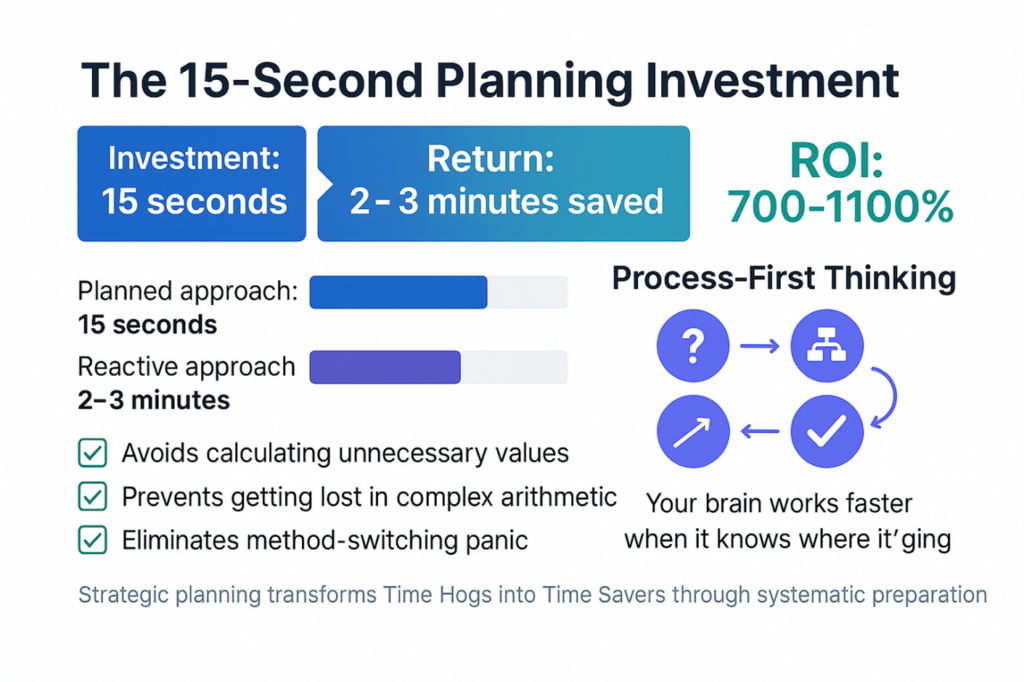
Before you write anything, before you calculate anything, take 10-15 seconds to:
- Identify the Core Challenge: What makes this problem appear difficult?
- Choose Your Weapon: Simplification? Drawing Inferences? Retrieving the applicable concept?
- Map Your Path: What are your steps going to be?
This isn’t wasted time. When you invest these 15 seconds upfront, you avoid:
- Calculating unnecessary values
- Getting lost in complex arithmetic
- Realizing halfway through that there’s an easier method
- The panic that comes from watching time slip away
⭐ Key Insight: We call this “Process-First Thinking”—a cornerstone of our Own the Dataset methodology. Your brain works faster when it knows where it’s going.
Your 90-Second Transformation Toolkit
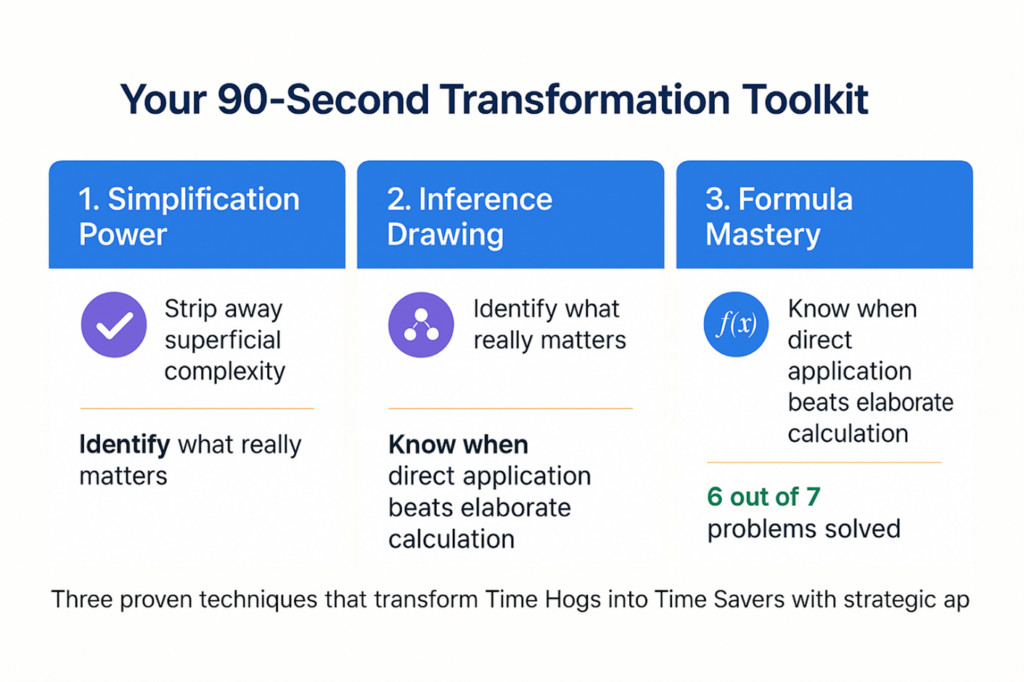
You now possess three powerful techniques for rapid problem-solving:
- Simplification Power: Strip away superficial complexity to reveal simple structures
- Inference: Identify what really matters and ignore the rest
- Formula Mastery: Know when direct application beats elaborate calculation
But more importantly, you understand the meta-skill: that 15-second planning pause that transforms Time Hogs into Time Savers.
⭐ Remember this: In our analysis of difficult GMAT arithmetic questions, only 1 in 7 genuinely requires extended calculation time. The other 6? They’re waiting for you to see through their disguise.
⚡Transform Your GMAT Quant Performance
Ready to apply these rapid-solving techniques? Access our comprehensive GMAT preparation resources:
- ✅ 400+ practice questions with step-by-step solutions
- ✅ Adaptive mock tests with detailed analytics
- ✅ Strategic frameworks for all question types
- ✅ Time-saving techniques and process-first methodology
What’s Next?
In our next article, “Strategic Solvers—The 2-3 Minute Champions,” we’ll tackle problems that require slightly more sophisticated approaches—the work rate problems and probability scenarios that benefit from systematic visualization. You’ll learn when to build tables, when to draw grids, and when strategic setup time pays massive dividends.
For now, practice these three techniques. Take that planning pause. Transform those intimidating problems into quick victories.
➡️ Final Thought: Speed on the GMAT isn’t about calculating faster—it’s about recognizing when you don’t need to calculate at all.
⭐ Master Rapid Problem-Solving Today
Transform complex GMAT problems into quick victories with our comprehensive rapid-solving methodology:
- ✅ Process-First Thinking frameworks
- ✅ Pattern recognition techniques
- ✅ Time-saving calculation methods
- ✅ Strategic planning approaches
- ✅ 90-second solution pathways


